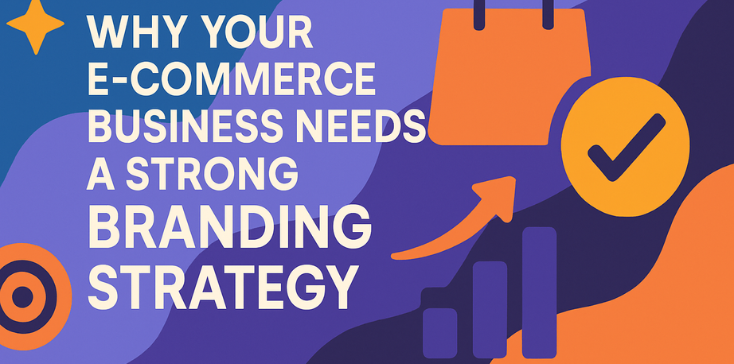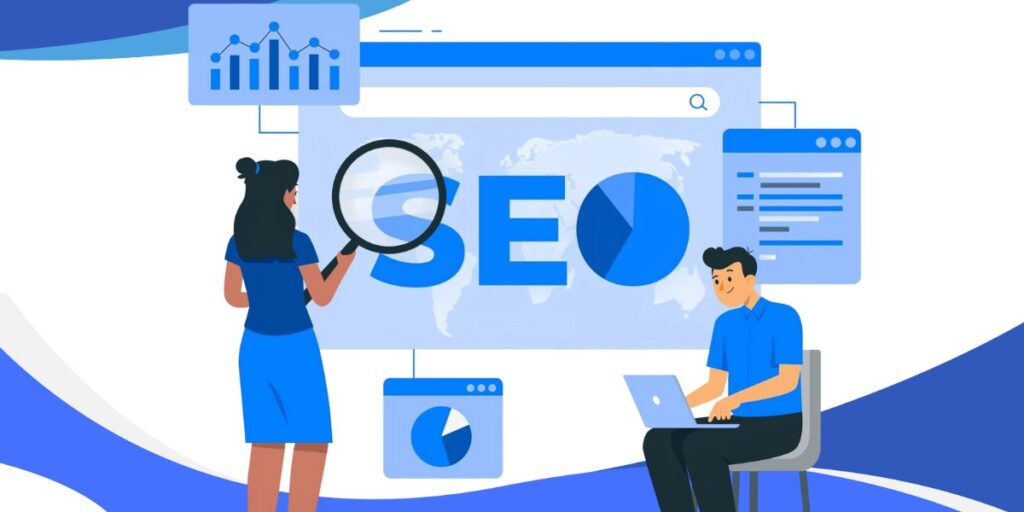Every Amazon seller and e-commerce brand needs to understand the different types of ecommerce marketing services available to stay ahead in today’s competitive marketplace. Whether you’re promoting a niche product or managing a large-scale storefront, knowing how to leverage the right strategies can be the difference between flat growth and explosive results.
At Growwithba, an expert e commerce marketing agency, we specialize in building tailored marketing strategies based on your product category, target audience, and budget. In this guide, we’ll walk you through 12 of the most effective ecommerce marketing types complete with actionable tips and real-world examples to help you start implementing today.
What Are the Types of Ecommerce Marketing?
It is refer as various methods used to promote products, attract traffic to online stores, convert visitors into buyers, and generate recurrence business. Some of these approaches focus on organic reach, while others are designed to produce instant results through paid placements or direct engagement.
Here are the 12 most effective and actionable types of ecommerce marketing for Amazon sellers:
- Search Engine Optimization (SEO)
- Pay-Per-Click (PPC) Advertising
- Content Marketing
- Email Marketing
- Social Media Marketing
- Influencer Collaborations
- Affiliate Marketing
- Retargeting/Remarketing
- Marketplace Optimization (Amazon-specific tools)
- Mobile Commerce (M-commerce) Strategies
- User-Generated Content (UGC)
- Loyalty and Referral Programs
Let’s take a closer look at how each of these e-commerce marketing works and when to use them.
Deep Dive: Types of E-commerce Marketing
1. Search Engine Optimization (SEO)
One of the most foundational types of ecommerce marketing is SEO. It helps your product listings and content rank higher in search engines and on platforms like Amazon and Flipkart. Good SEO increases visibility and drives qualified traffic without additional ad spend.
Key Strategies:
- Keyword research using Helium 10 or Ahrefs
- Optimizing product titles and descriptions
- Boosting credibility with positive customer reviews
2. Pay-Per-Click (PPC) Advertising
PPC is one of the fastest-moving ecommerce marketing strategies. By targeting specific keywords, sellers can instantly place their listings in front of high-intent shoppers.
Key Strategies:
- Set up auto and manual campaigns
- Monitor and optimize ACOS regularly
- Use long-tail keywords for better ROI
3. Content Marketing
Content marketing helps to build trust and nurtures potential customers. Will helps with blogs, videos, and guides to help you educate your audience while subtly promoting your products.
Key Strategies:
- Publish helpful blog posts answering buyer questions
- Include product links within the content
- Share across social media to increase reach
4. Email Marketing
Email Marketing remains one of the most cost-effective e-commerce marketing for retention and repeat business. Post-purchase sequences, abandoned cart reminders, and loyalty newsletters all work to increase lifetime value.
Key Strategies:
- Segment your audience based on behavior
- Personalize content and offers
- Automate your email flows for consistency
5. Social Media Marketing
Social Media marketing method uses platforms like Instagram and Facebook to drive awareness, engagement, and conversions. For e-commerce brands, it often serves as the top of the funnel.
Key Strategies:
- Share customer reviews and UGC
- Run giveaways and product drops
- Leverage story ads and Reels for reach
6. Influencer Collaborations
Collaborating with influencers is one of the most popular types of ecommerce marketing for niche products. It’s a great way to reach highly engaged audiences and add credibility through third-party endorsements.
Key Strategies:
- Use influencer content in ads
- Provide discount codes for tracking
- Choose influencers who align with your niche
7. Affiliate Marketing
In affiliate marketing, other content creators promote your products and earn a commission. It’s performance-based and scalable.
Key Strategies:
- Join affiliate networks like Amazon Associates
- Provide creatives and swipe files
- Track using Amazon Attribution tools
8. Retargeting and Remarketing
This tactic is ideal for recovering lost sales and increasing conversions. It targets users who’ve interacted with your listings but didn’t complete a purchase.
Key Strategies:
- Run retargeting ads via Amazon DSP or Google
- Customize messaging based on shopper behavior
- Use urgency-based offers to encourage action
9. Marketplace Optimization (Amazon-Focused)
This involves using Amazon’s built-in features like Brand Registry, A+ Content, and Sponsored Brands to elevate listings.
Key Strategies:
- Enroll in Amazon Brand Registry
- Add A+ content with comparison charts
- Analyze performance via Brand Analytics
10. Mobile Commerce (M-commerce)
Mobile commerce is no longer optional. Mobile-first optimization is one of the critical ecommerce marketing for today’s shoppers.
Key Strategies:
- Ensure fast mobile load times
- Optimize CTA buttons for tap-friendly design
- Keep product info short and scannable
11. User-Generated Content (UGC)
UGC marketing builds trust, encourages engagement, and increases conversion rates. Customer reviews, images, and testimonials are key components.
Key Strategies:
- Request UGC through follow-up emails
- Highlight reviews in your listings and ads
- Feature real customers in your marketing
12. Loyalty and Referral Programs
These programs reward your most valuable customers and help turn them into brand ambassadors. As one of the most cost-efficient types of ecommerce marketing, loyalty programs drive repeat sales and word-of-mouth growth.
Key Strategies:
- Offer points for purchases and referrals
- Gamify rewards to boost engagement
- Promote your program on all channels
Real-World Example: Amazon’s Mastery of E-commerce Marketing
Amazon’s marketing engine uses almost all the types of e-commerce marketing discussed above. From personalized retargeting ads to mobile-first experiences, Amazon continually adapts its strategies to customer behavior.
At Growwithba, we applied a similar omnichannel strategy for a D2C brand selling on Amazon. Using SEO, email marketing, and influencer partnerships, we helped increase their sales by 2.3x in just two months.
Why Choose Growwithba as Your E Commerce Marketing Agency?
As a results-driven agency, Growwithba brings deep expertise across all e-commerce marketing types and tools for it. Whether you’re launching a new product or scaling a best-seller, we tailor strategies to your unique market conditions and audience needs.
- 150+ successful Amazon store optimizations
- 70% average increase in organic visibility
- In-house team for design, copy, and campaign execution
Final Thoughts: Invest in the Right Ecommerce Marketing Services
From organic SEO to influencer-led campaigns, the right combination of ecommerce marketing services can set your brand apart. If you’re ready to build a powerful, scalable online presence, partner with an experienced e commerce marketing agency like Growwithba – and start driving results that matter.
FAQs
1. What are the different types of e-commerce marketing?
A: They include SEO, PPC, influencer marketing, affiliate marketing, content marketing, social media, UGC, and more.
2. Which types of e-commerce marketing are best for new Amazon sellers?
A: Start with SEO, PPC, and customer reviews to build credibility and drive initial traffic.
3. Do loyalty programs really work for Amazon sellers?
A: Yes – especially when integrated with email and remarketing to boost LTV.
4. Is influencer marketing better than affiliate marketing?
A: Both have value. Influencers help with reach and trust, affiliates with conversions and scale.
5. How does retargeting increase conversions?
A: It brings back high-intent users with personalized ads, often improving ROI dramatically.
6. How do I ensure my mobile experience is optimized?
A: Use responsive design, fast-loading pages, and minimal text with clear CTAs.
7. Can I use multiple types of e-commerce marketing at once?
A: Absolutely. A blended strategy is often the most effective.
8. How long does it take to see results?
A: PPC can show immediate results, while SEO and content marketing may take 4–8 weeks.
![BA LOGO 2[1] Logo](https://growwithba.com/wp-content/uploads/elementor/thumbs/BA-LOGO-21-rctdwc6e44k0gscol760abdhmupxvrcikanaiw5kow.png)



